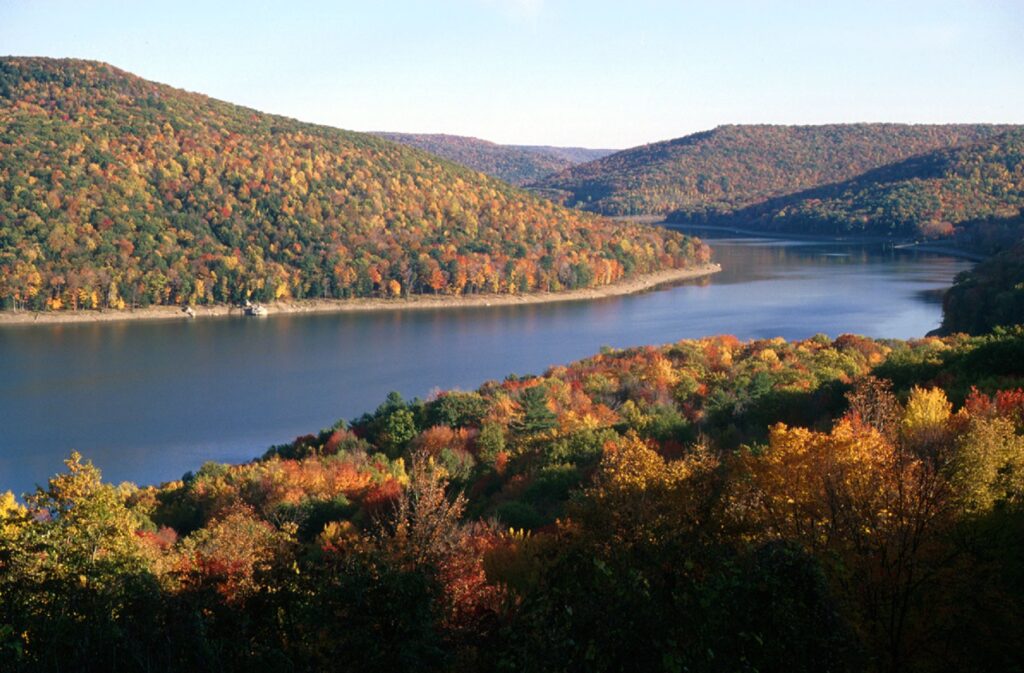Heritage / Our Roots
Heritage / Our Roots
The 19th-century lumber industry had a profound impact on Pennsylvania’s forests. The extensive logging operations that fueled America’s growth also led to widespread deforestation, leaving vast swathes of land barren and ecosystems disrupted. This industrial era, while economically beneficial, brought about significant environmental challenges that are being addressed today through managed growth and ecological sensitivity.
In response to the extensive destruction of Pennsylvania’s forests, the state established the Department of Agriculture in 1895. This move marked the beginning of a more regulated and conscious approach to forest management. The department aimed to balance the economic benefits of the lumber industry with the need to preserve and protect the state’s natural resources.
Gifford Pinchot, a pivotal figure in the early conservation movement, alongside other reformers, played a crucial role in protecting Pennsylvania’s remaining forests. Pinchot, who later became the first Chief of the United States Forest Service and the Governor of Pennsylvania, advocated for sustainable forestry practices. He emphasized the importance of managing forests for long-term health rather than short-term gain, laying the groundwork for modern forestry principles.

The Civilian Conservation Corps (CCC), established by President Franklin D. Roosevelt as part of his New Deal program, was instrumental in restoring Pennsylvania’s forests. The CCC set up work camps across the state, where young men were employed to undertake various conservation projects. Their efforts included:
Today, Pennsylvania’s approach to forest management is characterized by a commitment to ecological sensitivity and sustainable growth. Modern forestry practices emphasize the importance of maintaining biodiversity, protecting wildlife habitats, and ensuring that forests can continue to provide ecological, economic, and recreational benefits.
Sustainable forestry practices involve careful planning and management to balance the various uses of forest land. These practices include:
The legacy of conservation efforts in Pennsylvania is evident in the health and resilience of its forests today. The state’s forests are not only a testament to the success of these initiatives but also a vital resource for current and future generations. Managed growth ensures that the forests can continue to support a diverse range of species, provide recreational opportunities, and contribute to the economy.
The history of Pennsylvania’s forests is a story of both exploitation and renewal. While the 19th-century lumber industry caused significant damage, the subsequent efforts by conservationists, government agencies, and programs like the CCC have led to a remarkable recovery. Today, Pennsylvania’s commitment to managed growth and ecological sensitivity ensures that its forests remain a valuable and sustainable resource.
By learning from the past and continuing to innovate in forest management, Pennsylvania sets an example of how to balance economic needs with environmental stewardship. The preservation of these forests is not only crucial for the state’s ecological health but also for its cultural and economic vitality.
Heritage
During the era of the Great Depression, many young men left school to help support their families. Traditional educational paths were disrupted for countless individuals. The Civilian Conservation Corp (CCC), launched in 1933 as part of President Franklin D. Roosevelt’s New Deal,... Read more
© 2025 Lumber Heritage Region LLC | Website Designed & Hosted by Pixel & Hammer